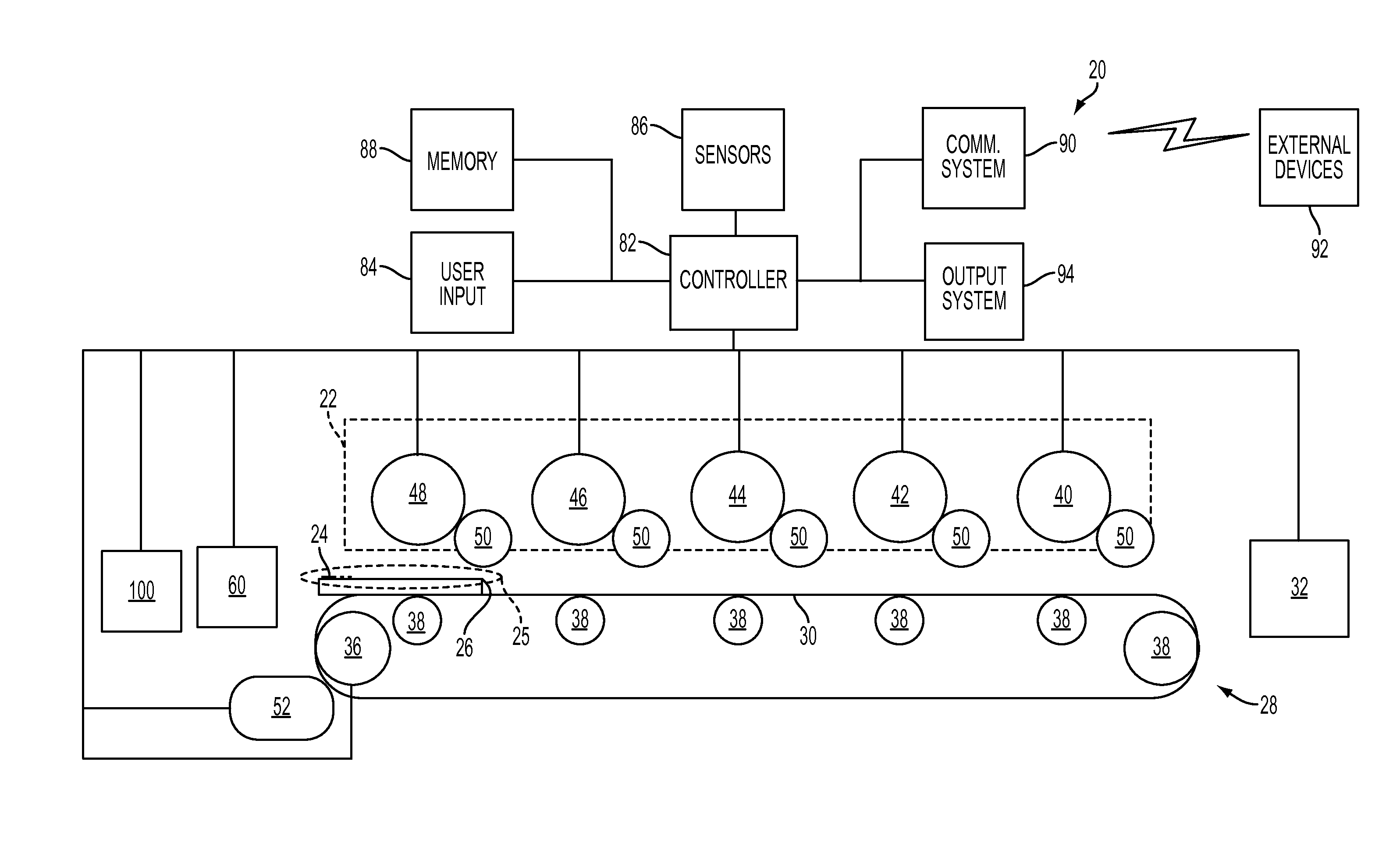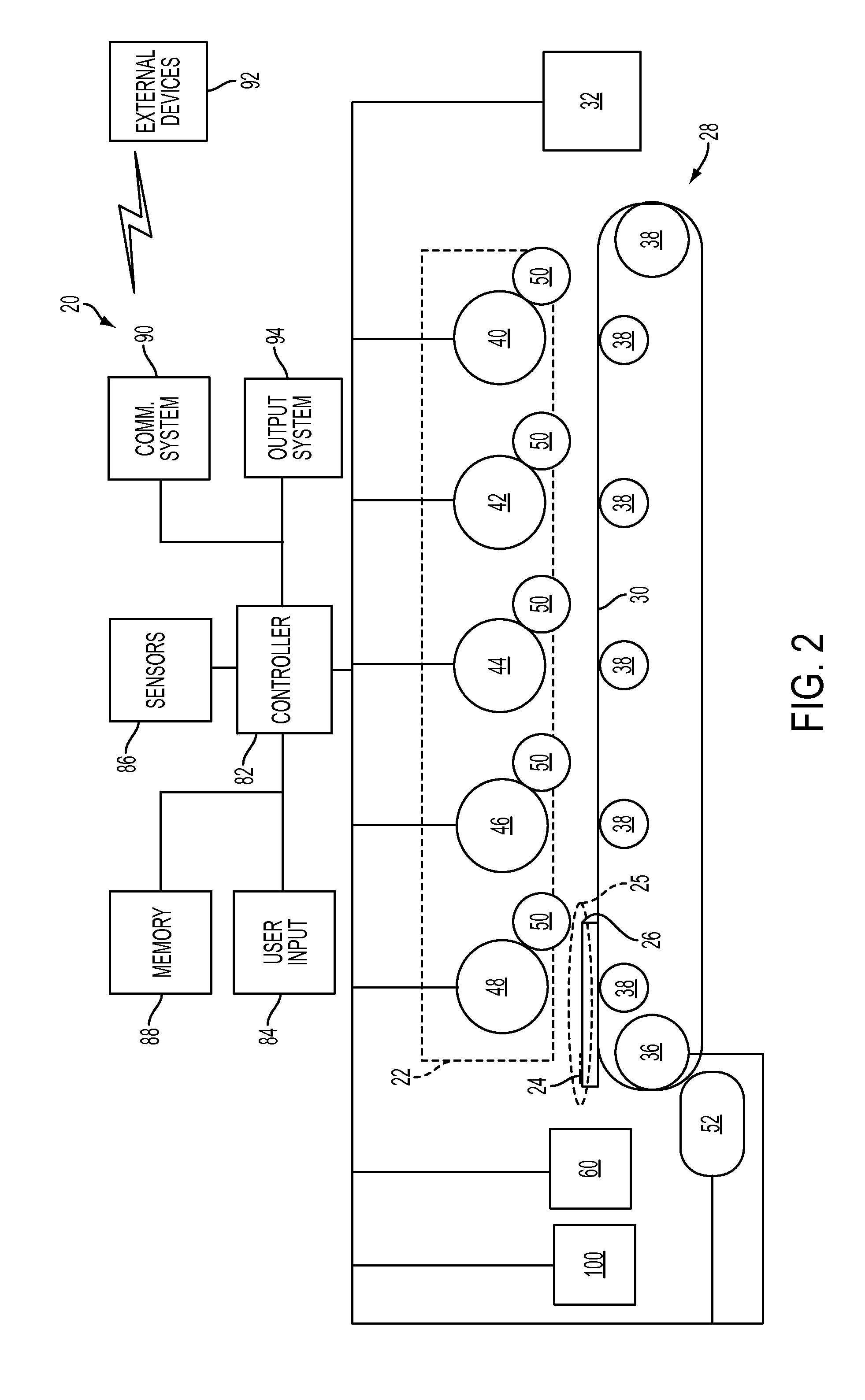Folding method for electrophotographic prints
a technology of electrophotography and folding method, which is applied in the direction of electrographic process, paper/cardboard containers, instruments, etc., can solve the problems of less than satisfactory finished product at the fold, toner image b>, other damage to the receiver, etc., and achieve the effect of reducing the exten
- Summary
- Abstract
- Description
- Claims
- Application Information
AI Technical Summary
Benefits of technology
Problems solved by technology
Method used
Image
Examples
Embodiment Construction
[0026]FIG. 2 is a system level illustration of an electrophotographic printer 20. In the embodiment of FIG. 2, electrophotographic printer 20 has an electrophotographic print engine 22 that deposits dry toner 24 to form a toner image 25 in the form of a patterned arrangement of toner stacks. Toner image 25 can include any patternwise application of toner 24 and can be mapped according data representing text, graphics, photo, and other types of visual content, as well as patterns that are determined based upon desirable structural or functional arrangements of the applied toner 24.
[0027]Toner 24 is a material or mixture that contains toner particles, and that can form an image, pattern, or coating when electrostatically deposited on an imaging member including a photoreceptor, photoconductor, electrostatically-charged, or magnetic surface. As used herein, “toner particles” are the marking particles used in an electrophotographic print engine 22 to convert an electrostatic latent imag...
PUM
| Property | Measurement | Unit |
|---|---|---|
| Length | aaaaa | aaaaa |
| Fraction | aaaaa | aaaaa |
| Temperature | aaaaa | aaaaa |
Abstract
Description
Claims
Application Information
 Login to View More
Login to View More - R&D
- Intellectual Property
- Life Sciences
- Materials
- Tech Scout
- Unparalleled Data Quality
- Higher Quality Content
- 60% Fewer Hallucinations
Browse by: Latest US Patents, China's latest patents, Technical Efficacy Thesaurus, Application Domain, Technology Topic, Popular Technical Reports.
© 2025 PatSnap. All rights reserved.Legal|Privacy policy|Modern Slavery Act Transparency Statement|Sitemap|About US| Contact US: help@patsnap.com



